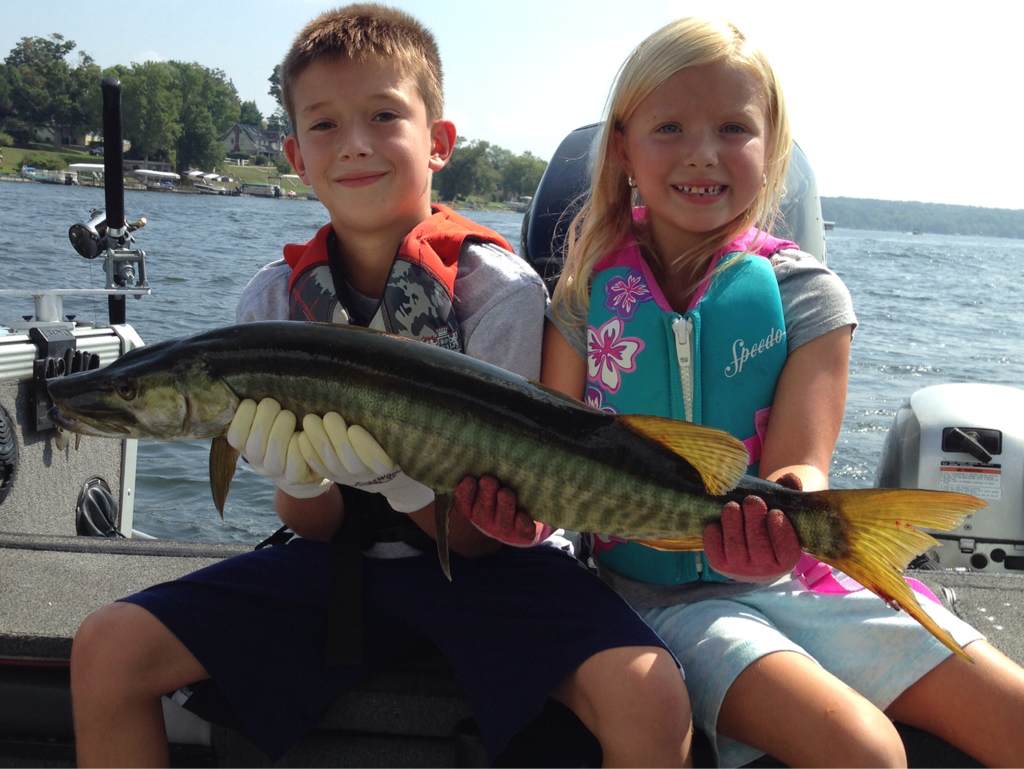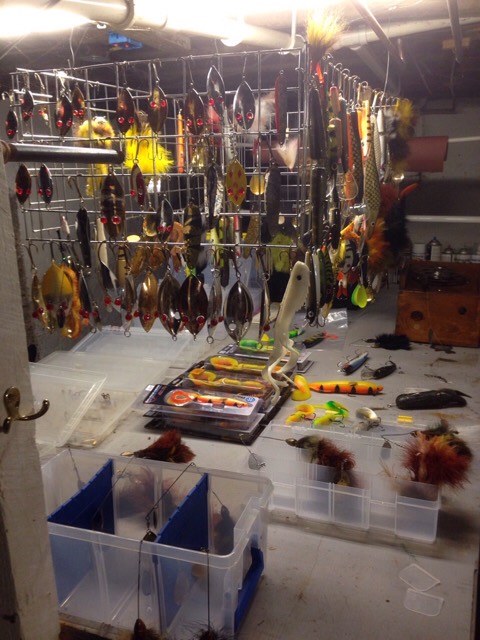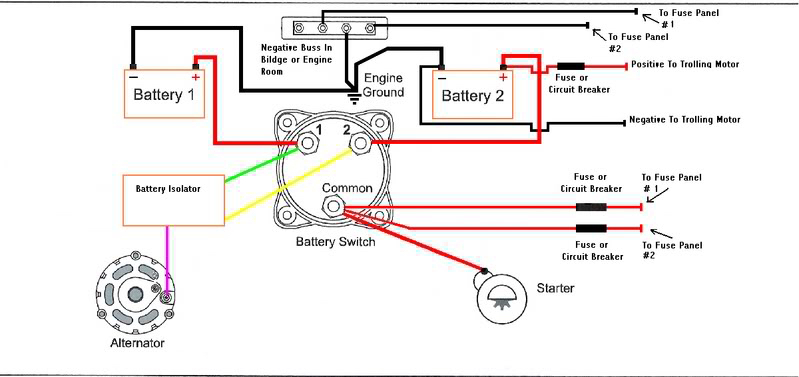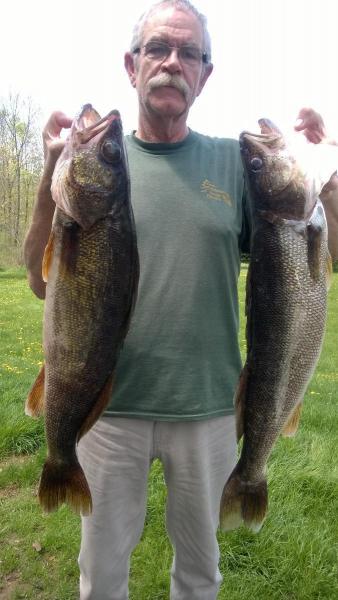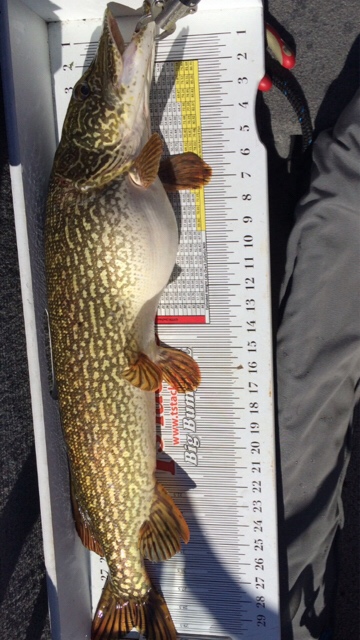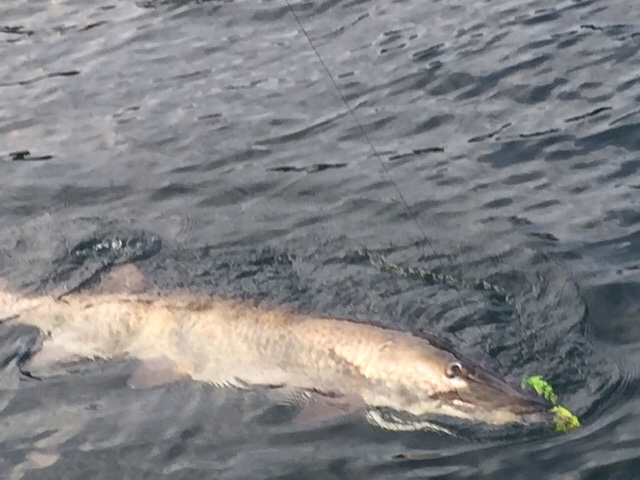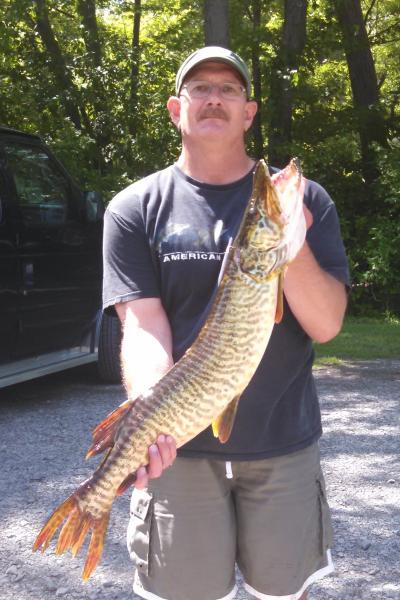-
Posts
1,067 -
Joined
-
Last visited
Content Type
Profiles
Forums
Events
Gallery
Store
Everything posted by muskiedreams
-

Check it out fellow muskie folk
muskiedreams replied to JOE ESOX's topic in Musky, Tiger Musky & Pike (ESOX)
-

Landed a Triple on video
muskiedreams replied to Peave's topic in New York Fishing Reports - Lake Ontario (South Shore)
They must like SRV. -
-

otisco 8/8 and 8/9
muskiedreams replied to justtracytrolling's topic in Musky, Tiger Musky & Pike (ESOX)
It can be difficult to Identify a tiger sometimes. Tigers can easily be confused with barred muskies. Sometimes a barred musky can be pretty dark in color to where someone might say it is a tiger. I have seen this at Waneta lake where tigers were never stocked and it would be highly unlikely since northerns a very very rare. Since only tigers have been stocked in Otisco, you can be certain when you catch one that it is a tiger but if you saw the a picture and did not know that fact and/or did not know where it was caught, you might think it is a dark purebred. Also pictures can look darker or lighter than the actual subject. If it has solid unbroken vertical bars, there is no doubt that it is a tiger. If it has broken vertical bars, it can be mistaken for a barred purebred. The fish that FishinNY gets in his home waters can only be tigers, as dark as they are an with the prominent vertical bars. The bars are very wade too. I would like to know why they look so different than the tigers in Otisco. They all come from the same hatchery. Some other tigers I have seen have much narrower bars but unbroken and very dark. The DEC regulations in waters that contain both tigers and purebreds are the same for both because they can so easily be misidentified. I have attached a PDF (hopefully) showing how to identify the different types of muskies, tigers and pike and even with that it may be difficult to make the determination sometimes. If you are familiar with how they typically look in a particular body of water it is a lot easier. Even then, it can be difficult sometimes. The Upper Niagara River has both but sometimes the barred muskies are pretty dark and can be mistaken for a tiger. Looking closely at the fins and cheeks can help.Muskellunge_Northern_Pike_Signs_12x18_Print_-_NJ_Chapter_ (25%).pdf I hope the NJ Chapter and Muskies Inc.doesn't mind I put this here. I couldn't figure out how to convert it to an image. -
This meeting, like all our meetings, is open to the public The meeting will be at 7:00 PM, on Monday, Sept 21st at The Genesee Valley Henrietta Moose Lodge 2290, at 5375 West Henrietta Rd. Henrietta, NY. Click Here for directions. We are pleased to be hosting guest speaker Dr. John Farrell who will be giving us a presentation on the latest research and management work that is being done by the St. Lawrence River Muskellunge Management Work Group. John is an Associate professor at the SUNY College of Environmental Science and Forestry and also Director of the Thousand Island Biological Station in Clayton, NY. He has been working for many years in Musky management and research on the St. Lawrence and will presenting all the latest information about the state of the musky fishery there. Below is a link to to a report that was published in 2010 which gives a good overview of the ongoing efforts of the group since about 1980 to help preserve the magnificent natural musky fishery of the St. Lawrence River. http://www.esf.edu/tibs/Documents/SLR%20Muskellunge%20Management%20Plan%20III.pdf I want to mention that a member of our Chapter Peter Levick, who is also President of Muskies Canada introduced me to Mr. Farrell and helped make this happen. Thank you very Much Pete!! This should be a very informative presentation.
-
Maybe Vermont puts them in a pond and feeds them minnows for a while before they release them. Supposedly they are stocking in two tributaries that flow into Lake Champlain. Also New York State has been stocking them in the great Chazy River. I think since about 2005. There are some 40" class fish being caught there now.
-
-
I heard there hasn't been much happening. I think temp is about 78F. Could be dropping with the cool days recently.
-
I wonder how they are doing in Webster from Shipbuilders creek to Hedges. It would be great if they are coming back. Smallmouth are still doing good in Lake Erie and Niagara River. I don't think they ever had the problem there. I think eastern Lake Ontario never had the problem as bad either. It used to be a blast catching them before they crashed. I had to switch from hair jig with worm to tube jig (dark brown and green colors) when the gobies became a problem. Also used to do pretty good trolling crank baits. White plastic grubs (3 or 4 inch) used to kill them at times. They would be stacked up in shallow when the lake turned over. Catch rate of 20/hr or more at times.
-
I knew that you are only allowed to travel with one day's catch in Canada. So if you are there several days, you can eat some while you are there but can only bring one day's catch home. Are you saying that residents can only possess one days catch in your freezer at home? Do you have to eat some before you can keep more? Does this mean that you can't stock up on them during the season for the winter? Can you possess a total equal to the limits of all family members or residents added together?
-
The text below is taken from the 2015 regulation guide. Here is a link to the complete fishing regulations. The pertinent text is in red. I am not sure if 40 Acre Shoal is east or west of the line described below. So east of the line is only one line per angler. All waters of Lake Ontario, including the Niagara River (downstream of Niagara Falls). The following waters are excluded: Jordan Harbour, Hamilton Harbour, Toronto Harbour, Frenchman’s Bay, Murray Canal, Presqu’ile Bay, Weller’s Bay, East Lake, West Lake, the Bay of Quinte (the waters lying west of the Glenora Ferry), the St. Lawrence River (waters lying east of a line drawn between Bishops Point and the easternmost tips of Howe and Wolfe islands), and all other tributaries to Lake Ontario. Two lines may be used when angling from a boat in open water.
-
I just looked at the regs. General regs is 1 rod. There is an exception of 2 rods for Lake Ontario and also for Lake Erie and Lake St. Clair (except not Detroit River or St. Clair River). It looks like all of Niagara River is also 2 rods but St Lawrence is only so far up. I didn't check other Great Lakes and I guess there could be other waters where 2 rods are allowed but you would have to check the regional regulations. About being allowed in Canadian waters, I heard that if you have had a DWI, you are not allowed. I also heard that there is a way to become allowed again but it may cost some money.
-
If you or anyone on your boat has been convicted of a felony, you are not allowed in Canadian waters. If you get checked any person(s) in violation of that rule could be taken from the boat and deported at the nearest border crossing. Also you are not allowed to have any alcohol or firearms aboard. One fishing line per angler. Be careful to abide by all rules. They have been known to confiscate boats on occasion for violations. Do not go into Canadian waters without reporting in. I'm not sure but there may also be new US rules (or soon to be) for returning to US waters.
-

perko switch overpowering system
muskiedreams replied to Great Lakes Lure Maker's topic in This Old Boat
You may have to look at the switch and what connections are made by the switch in each position. Also compare it to the configuration with the original switch. If you have only replaced the switch, the replacement switch must be of identical function and configuration. Also, every boat is configured differently, depending on equipment and needs and could be modified over time from the original wiring. On my boat, I have a 75hp Merc., a three bank charger with two deep cycle batteries and a cranking battery. I originally had a 24 volt bow mount and later went to a 12 volt one. When I did that I had to run heavier gauge wire for it. There is a 12/24v switch on the charger that would switch the deep cycle batteries from series (24v) to parallel (12v). I used to switch it to 12 v for the cannon electric downriggers I had at the time so that the auto stop would work on both of them. I did have each rigger connected to separate batteries so that there was no way to accidentally send 24v to the riggers. If I forgot to change the switch to 12 v, it would just cause the auto stop to not work on one of the riggers. The charger does some automatic switching and has a wire to connect to the output of the voltage regulator on the motor for charging all three batteries when the motor is running. When I first installed the charger, with that wire connected, the voltage regulator in the outboard fried. It is only rated for 15 amp charging current so maybe that is the reason. It couldn't handle charging 3 batteries at once. I disconnected that wire after I replaced the regulator so it only charges the cranking battery now while under way. I don't have a separate battery switch. I just keep the switch on my charger set to 12 v so I am running on both deep cycle batteries in parallel so they are discharged equally. The main battery is only used for cranking and the radio. Everything else is connected to the deep cycle batteries. They do not get charged until I plug in to AC power. I would be curious to learn what the battery isolator does. I wonder if it only charges one battery at a time and switches automatically. I believe some newer boats have the ability to charge a cranking battery and two or three deep cycle batteries from the outboard while under way. I think they charge the cranking battery first. They must have a hefty alternator in the outboard. -

Hemlock 36" Walleye - Hemlock 7/31
muskiedreams replied to FLXTrolling's topic in Finger Lakes Discussion
Now I understand why some anglers don't give any measurements when posting pictures. There is always someone who will question it! Of course the reason why is because lairs do exist. But there are also those out there that don't believe anything. Even if there is concrete proof, they might still find a way to say it is a lie. -

perko switch overpowering system
muskiedreams replied to Great Lakes Lure Maker's topic in This Old Boat
Are you sure they were in series with the old setup? It sounds like you may be getting 24 volts (series wired) when you select 1 or 2. And setting it to both may be connecting them in parallel giving you 12 volts (both positives connected together and both negatives connected together). Note that if the batteries are connected in series, you will get 24 volts. Most of your equipment, except for some bow mount trolling motors, runs on 12 volts. If you have a 24 volt bow mount, the batteries will have to be in series for it and the other equipment will have to be connected to just one of the batteries. Every system is different depending on what the needs are and the equipment installed. If there is an on board charger that connects to AC Power and if the batteries are charged from the motor are also considerations. There may be other devices installed to enable battery charging modes or an on board charger may control those functions. If you have a DC volt meter, check voltages going to the equipment but disconnect electronics (or remove fuses) to protect them. 24 volts going to 12 volt devices can cause serious damage. -
-
For trailering, I use a ratchet strap to secure my 15 hp 4 stroke on a Garelick mount so it does not bounce. Bouncing will create excessive strain on all parts. I string the strap through the rear cleat, down and around the motor shaft, through the u bolt on the transom, then back around the motor shaft to the ratchet. Then I also use a heavy rubber bungee cord from the E-Z Steer connector mounted on the motor shaft to the trailer to keep the motor from swinging back and forth. The motor is in the vertical position.
-
Samson Marine in Red Creek, NY, (315) 754-0050. Your insurance company might want to send their own appraiser.
-
-
Sharing and learning is what this forum is all about. There is nothing wrong with giving your opinion in a respectful way. But it is wise to be open to and to try to understand the opinion of others as well. Justin has been graciously sharing information all along. Just because he recently became licensed to guide, doesn't mean that should change. The DEC is not stocking the lake for the enjoyment of just a "closed group". These efforts are paid for by the fishing licenses we all buy and when we purchase fishing gear. EVERYONE has the right to fish ALL public waters in NY State. Otisco Lake isn't the only lake in the state that has quality walleye fishing but if the DEC is seeing low utilization, they may reduce stocking. And if they don't have a clear understanding of how many fish are being harvested and what the catch rate and growth rate is (and the angler diary helps them with that), they will have a more difficult time maintaining the fishery.
-
The only tiger musky hatchery in New York is the South Otselic Hatchery. I think all stocked tigers in the state come from there. I am not sure where they get their eggs or what they use for brood stock. Of course there are some naturally occurring tigers but, Jay, aren't the tigers you are catching stocked? This is the only thing I could find that suggests that all tigers stocked in the state come from the South Otselic Hatchery. http://www.dec.ny.gov/outdoor/7742.html If they all come from the same hatchery, I am thinking that the color is all related to environment. It would be interesting to find out what influence various environmental factors have on the color and darkness.
-
PS: If anyone finds a transom mount Gaerlick ladder on the bottom of the lake, let me know.



